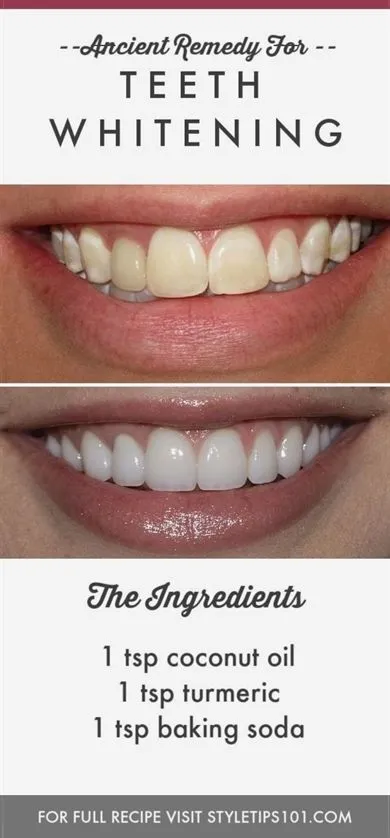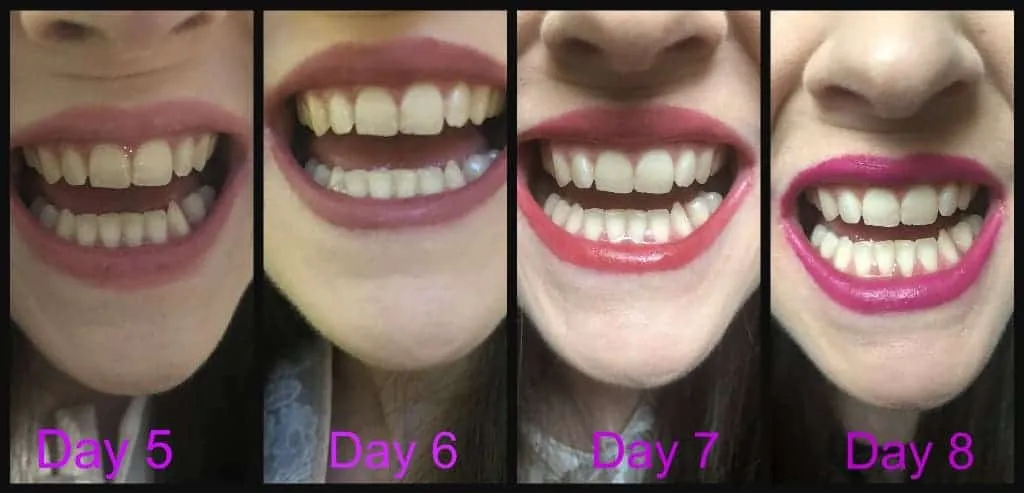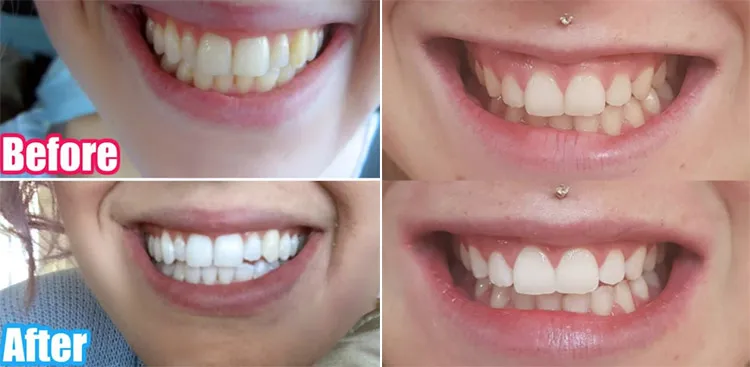Teeth whitening is a popular cosmetic procedure, but it can sometimes lead to a side effect that many people dread sensitivity. If you’ve experienced a shooting pain after whitening your teeth, you’re not alone. This article delves into the reasons behind this sensitivity and offers practical solutions to alleviate the discomfort, helping you maintain a bright, healthy smile without the agonizing aftermath. Discover the secrets to a more comfortable whitening experience and learn how to manage sensitive teeth effectively, ensuring you can enjoy the benefits of a dazzling smile.
Understanding Teeth Sensitivity After Whitening
Teeth sensitivity after whitening is a common, temporary side effect. It occurs when the whitening agents, usually hydrogen peroxide or carbamide peroxide, penetrate the enamel and reach the dentin layer, which contains microscopic tubules that lead to the nerve of the tooth. This process can irritate the nerves, causing sensitivity to hot, cold, sweet, or acidic foods and beverages. Understanding the root cause is the first step in managing and mitigating the discomfort associated with this condition. Many factors influence the degree of sensitivity, including the concentration of the whitening agent, the duration of its application, and the individual’s existing oral health.
The Science Behind Whitening and Sensitivity
Tooth enamel, the outermost layer of your teeth, is porous. Whitening agents work by penetrating these pores to break down stain molecules. This process can also affect the dentin, which is more porous and contains the nerve endings. When the whitening agent comes into contact with these nerves, it can trigger sensitivity. The level of sensitivity can vary significantly from person to person, depending on the thickness of their enamel, the size of their dentin tubules, and the overall health of their teeth. Understanding this process helps in choosing the right whitening method and aftercare to minimize sensitivity.
Why Does Whitening Cause Sensitivity?

The primary reason for teeth sensitivity after whitening is the irritation of the tooth’s nerve. Whitening agents, particularly those with higher concentrations of hydrogen peroxide, can inflame the nerves in the dentin, leading to sharp, transient pain. This is a temporary effect, and the sensitivity usually subsides within a few days or weeks after the whitening treatment. However, the intensity of the sensitivity can vary based on the type of whitening product used, the frequency of application, and individual oral health conditions. It is crucial to follow all instructions provided by your dentist or the product manufacturer to mitigate the risk.
Common Causes of Sensitivity
Sensitivity can arise from several factors related to whitening. Overuse of whitening products is a significant contributor, as is using high-concentration agents. Other factors include existing dental issues like cavities or gum recession, which can expose the dentin. Additionally, individuals with naturally thin enamel may experience heightened sensitivity. Pre-existing sensitivity from other dental procedures also plays a role. These factors, combined with the whitening process, can heighten the likelihood and severity of discomfort, emphasizing the importance of proper consultation and careful application.
Effective Strategies to Reduce Sensitivity
Fortunately, there are many effective strategies to reduce teeth sensitivity after whitening. Implementing these methods can provide significant relief and allow you to continue enjoying a brighter smile without unnecessary discomfort. The key is to be proactive and consistent, incorporating these practices into your daily oral hygiene routine. From using specialized toothpastes to adjusting your diet, these strategies provide multiple layers of defense against sensitivity, enabling you to maintain both the aesthetics and the comfort of your teeth.
Use Desensitizing Toothpaste

Desensitizing toothpastes are specifically designed to block the pathways to the tooth’s nerves, reducing sensitivity. These toothpastes typically contain ingredients like potassium nitrate or stannous fluoride, which help to soothe the nerves and build up a protective layer on the teeth. Using this type of toothpaste for a few weeks before and after whitening can significantly reduce sensitivity. Consistency is crucial; use it as your regular toothpaste for the best results. Look for brands recommended by dentists and follow the instructions on the packaging.
How Desensitizing Toothpaste Works
Desensitizing toothpastes work in two primary ways: by blocking the nerve signals and by creating a protective barrier. Potassium nitrate penetrates the tooth and calms the nerve endings, making them less responsive to stimuli. Stannous fluoride helps block the dentin tubules, preventing substances that cause sensitivity from reaching the nerve. By using these toothpastes regularly, you can reduce the transmission of pain signals and create a more comfortable experience. For optimal results, allow the toothpaste to remain on your teeth for a few minutes before rinsing.
Proper Brushing Techniques
Proper brushing techniques can also help minimize sensitivity. Avoid brushing too aggressively, as this can wear down enamel and expose the dentin, increasing sensitivity. Use a soft-bristled toothbrush and apply gentle, circular motions. Brush for two minutes, twice a day, ensuring you reach all surfaces of your teeth. Proper technique not only minimizes sensitivity but also improves overall oral health by removing plaque and preventing gum disease. Regular dental check-ups can also help identify any potential issues that might increase sensitivity.
Avoid Over-Brushing

Over-brushing is a common culprit in causing or exacerbating teeth sensitivity. Brushing too hard or too frequently can erode the enamel and cause gum recession, exposing the sensitive dentin. This can lead to increased sensitivity and discomfort, especially after whitening. To prevent this, use a soft-bristled toothbrush, brush gently, and avoid excessive pressure. Pay attention to the technique, focusing on gently cleaning each tooth surface, and avoid scrubbing motions that can wear down enamel and damage the gums.
Choose the Right Toothbrush
Selecting the right toothbrush is crucial for maintaining good oral hygiene and minimizing sensitivity. Always opt for a soft-bristled toothbrush, as hard bristles can be too abrasive and damage the enamel and gums. Consider using an electric toothbrush with a pressure sensor, which can alert you if you’re brushing too hard. Replace your toothbrush every three months or sooner if the bristles become frayed. The right toothbrush will help you clean your teeth effectively without causing unnecessary irritation or sensitivity, protecting your teeth from damage.
The Role of Fluoride Treatments
Fluoride is an essential mineral that strengthens tooth enamel and helps reduce sensitivity. It works by remineralizing the enamel and making it more resistant to acid attacks. Fluoride treatments can be applied professionally by your dentist or used at home in various forms. These treatments help to protect the teeth from sensitivity and decay. Regular use of fluoride products can significantly improve your oral health and provide added protection during and after teeth whitening. This will keep your teeth strong and healthy.
Professional Fluoride Applications

Dentists can apply high-concentration fluoride treatments directly to your teeth during check-ups. These applications are more potent than over-the-counter products and provide enhanced protection against sensitivity. The fluoride is usually applied in the form of a gel, foam, or varnish, and it’s left on the teeth for a few minutes. Professional fluoride treatments help to strengthen the enamel and reduce sensitivity, making your teeth more resilient. Regularly scheduled dental visits are vital for these treatments to maintain optimal oral health.
Home Fluoride Options
In addition to professional treatments, there are various home fluoride options available. These include fluoride toothpastes, mouth rinses, and gels. Using a fluoride toothpaste is a simple yet effective way to incorporate fluoride into your daily oral care routine. Fluoride mouth rinses can provide an added layer of protection, and gels can be applied with a custom-fitted tray for targeted treatment. Follow the instructions on the product labels, and consider consulting with your dentist to determine the best home fluoride regimen for your specific needs.
Dietary Adjustments for Sensitive Teeth
Your diet plays a significant role in managing teeth sensitivity. Certain foods and beverages can exacerbate sensitivity, while others can help to protect and soothe your teeth. Making mindful dietary adjustments can alleviate discomfort and contribute to overall oral health. By understanding which foods to avoid and which to include, you can significantly improve your experience after teeth whitening and maintain a healthy, comfortable smile. This dietary approach ensures you enjoy eating and drinking without the constant worry of triggering sensitivity.
Foods to Avoid

Certain foods and drinks can trigger or worsen tooth sensitivity. These include acidic foods such as citrus fruits, tomatoes, pickles, and vinegar-based dressings. Carbonated beverages, sugary snacks, and very cold or hot foods can also exacerbate the pain. Limit your consumption of these items, especially immediately after whitening. If you do consume acidic or sugary foods, rinse your mouth with water afterward to help neutralize the acids and protect your teeth. Being mindful of your diet is essential for managing sensitivity.
Foods to Include
Focus on consuming foods that support oral health and minimize sensitivity. Dairy products like milk, yogurt, and cheese are rich in calcium and can help strengthen your teeth. Foods high in fiber, such as vegetables and fruits, promote saliva production, which helps neutralize acids. Drink plenty of water to stay hydrated, and choose foods that are gentle on the teeth. Incorporating these foods into your diet can contribute to overall oral health and reduce the likelihood of sensitivity. A well-balanced diet supports both your teeth and your overall well-being.
The Importance of Hydration
Staying well-hydrated is essential for overall oral health and can help manage teeth sensitivity. Water helps to rinse away food particles and neutralize acids, protecting your teeth from damage. It also stimulates saliva production, which contains minerals that remineralize enamel. Drink plenty of water throughout the day, especially after meals and snacks. Adequate hydration ensures that your mouth stays moist and that your teeth are better protected against sensitivity. It is a simple yet effective measure in your oral care routine.
Alternative Whitening Methods

If you are highly susceptible to teeth sensitivity, alternative whitening methods may be a better option. These methods often involve milder whitening agents or techniques that are less likely to irritate the teeth. Exploring these alternatives can help you achieve a brighter smile while minimizing the risk of discomfort. Discuss these options with your dentist to determine the most suitable approach for your specific dental needs and sensitivity levels, ensuring the process is both effective and comfortable.
Professional Whitening Options
Dentists offer a range of professional whitening options that can be customized to minimize sensitivity. These include in-office whitening treatments, which use stronger whitening agents under careful supervision. Your dentist can also monitor the process closely and take measures to reduce sensitivity, such as using desensitizing agents or adjusting the concentration of the whitening product. Professional treatments can deliver excellent results while minimizing side effects. Discuss your sensitivity concerns with your dentist to explore the best options for your needs, ensuring a safe and effective whitening experience.
At-Home Whitening Alternatives
For those seeking at-home options, there are alternatives that can reduce sensitivity. These include whitening toothpastes, strips, and trays that contain milder whitening agents or desensitizing ingredients. Always follow the instructions carefully and consider starting with lower concentrations to assess your tolerance. Another effective approach involves using custom-fitted whitening trays provided by your dentist, which allow for precise application and can be combined with desensitizing treatments. These alternatives provide a gentler approach to whitening, making them suitable for individuals prone to sensitivity.
When to Consult Your Dentist
While mild sensitivity after teeth whitening is common, it’s crucial to know when to seek professional help. Recognizing the signs of a more serious issue can prevent complications and ensure your oral health. Your dentist can provide accurate diagnoses and effective treatments. They can also help identify underlying dental problems that may be contributing to your sensitivity. Regular dental check-ups and prompt consultation for persistent or severe pain are essential to maintaining a healthy, bright smile.
Recognizing Serious Issues
If your sensitivity is severe, prolonged, or accompanied by other symptoms, consult your dentist immediately. Signs to watch out for include sharp, shooting pain that lasts for more than a few days, pain that occurs spontaneously, or pain that is not relieved by desensitizing toothpaste. Other concerning symptoms include swelling, bleeding gums, or any unusual changes in the appearance of your teeth. These symptoms could indicate a more serious dental problem that requires immediate professional attention.
What Your Dentist Can Do
Your dentist can offer various treatments and recommendations to address severe tooth sensitivity after whitening. They may recommend professional fluoride treatments, prescribe stronger desensitizing agents, or suggest alternative whitening methods. They can also identify and treat underlying dental problems such as cavities or gum disease that may be contributing to the sensitivity. Your dentist will provide personalized advice based on your individual needs and dental health history. Regular dental check-ups and professional care are crucial to ensure the health and longevity of your teeth, and to make your whitening experience more comfortable.
In conclusion, teeth sensitivity after whitening is a common concern, but it is often manageable with the right strategies. By understanding the causes and implementing the solutions outlined, you can significantly reduce discomfort and maintain a bright, healthy smile. From using desensitizing toothpaste and proper brushing techniques to making dietary adjustments and seeking professional help when needed, you can take proactive steps to alleviate sensitivity. Regular dental check-ups and open communication with your dentist are also crucial for achieving and maintaining optimal oral health. Embrace these methods and enjoy the confidence that comes with a dazzling smile without the pain.
